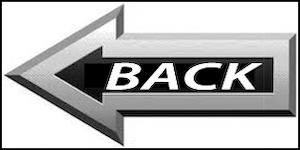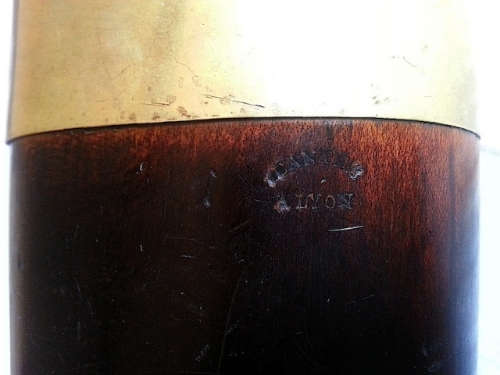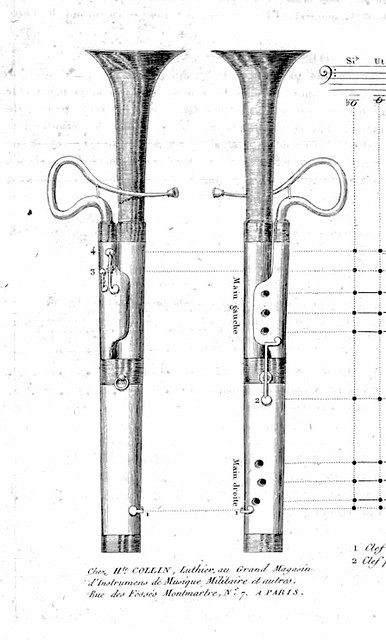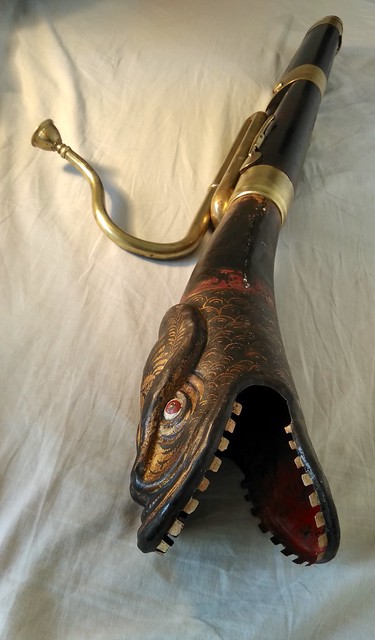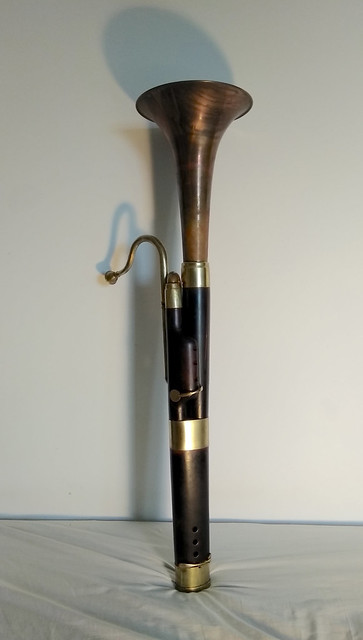 Lille (France), 1789. J. J. Regibo invents a three-part detachable upright Serpent. This is the (historically debatable) date attributed to the creation of the Russian Bassoon. It found its golden age during the second quarter of the 19th century. Countries such as France, Belgium, Germany and Italy, housed various local manufacturers for Russian Bassoons. The name is assumed to proceed from Rust (one of the first manufacturers in Lyon, succeeded by Dubois), pronounced in a very similar way as "Russian" in French (Russe). Another theory holds that it could have been called Prussian Bassoon in the first place, instead of Russian (due to another spelling mistake), having been used in the Napoleonic campaigns at Prussia. Either way, its name is presumed to have nothing to do with its real geographical origin, although the manufacturer Rust was in fact of Prussian origin.
Lille (France), 1789. J. J. Regibo invents a three-part detachable upright Serpent. This is the (historically debatable) date attributed to the creation of the Russian Bassoon. It found its golden age during the second quarter of the 19th century. Countries such as France, Belgium, Germany and Italy, housed various local manufacturers for Russian Bassoons. The name is assumed to proceed from Rust (one of the first manufacturers in Lyon, succeeded by Dubois), pronounced in a very similar way as "Russian" in French (Russe). Another theory holds that it could have been called Prussian Bassoon in the first place, instead of Russian (due to another spelling mistake), having been used in the Napoleonic campaigns at Prussia. Either way, its name is presumed to have nothing to do with its real geographical origin, although the manufacturer Rust was in fact of Prussian origin.
Although its shape is very different from that of the traditional serpent, they are basically played in an identical manner. They both contain 6 holes, although this one usually brings 3 extra keys. It has an uncoated wooden body. The rest of the connecting pieces (the lower e bow and the lead pipe etc.) are made of brass. The bell is also metallic and in some versions it has been given a dragon-head shape. The fact of being detachable and having a bassoon-like shape greatly facilitates the use for which it was created: the role of band bass in military services (where we will also find the buccin trombone, with the same sort of dragonlike bell). The Russian bassoons, usually those with traditional bells, were often used within the orchestra in symphonic and opera scores, as was the serpent, being in fact interchangeable instruments according to the place and the musician that was available. There is an original method of Héral for Russian bassoon in its version with the dragon bell.


